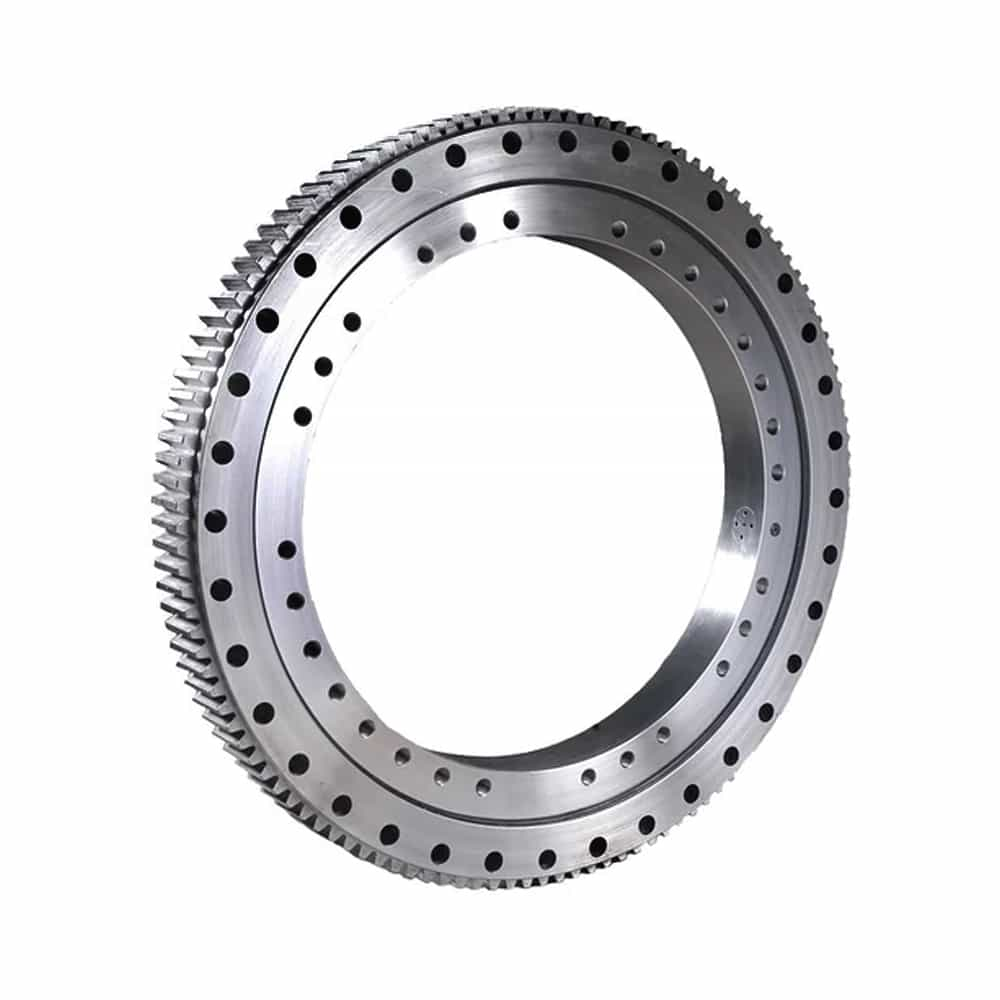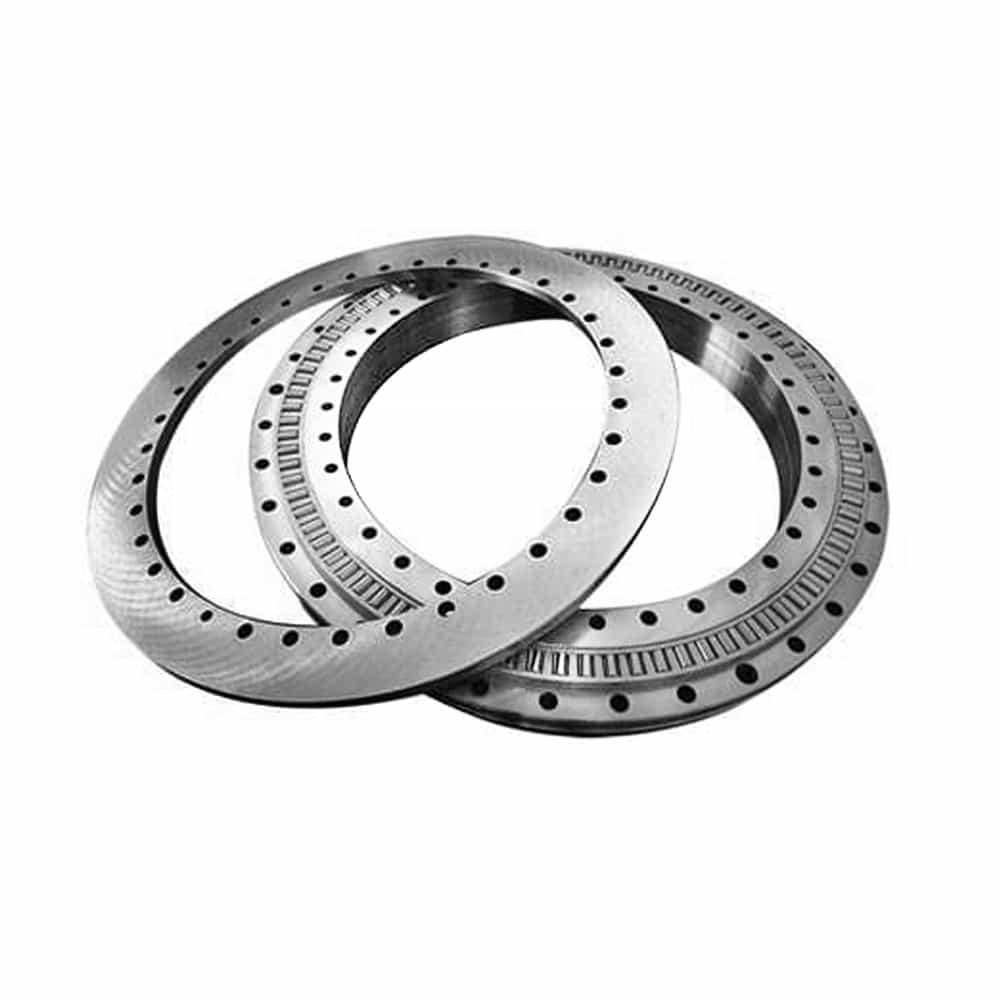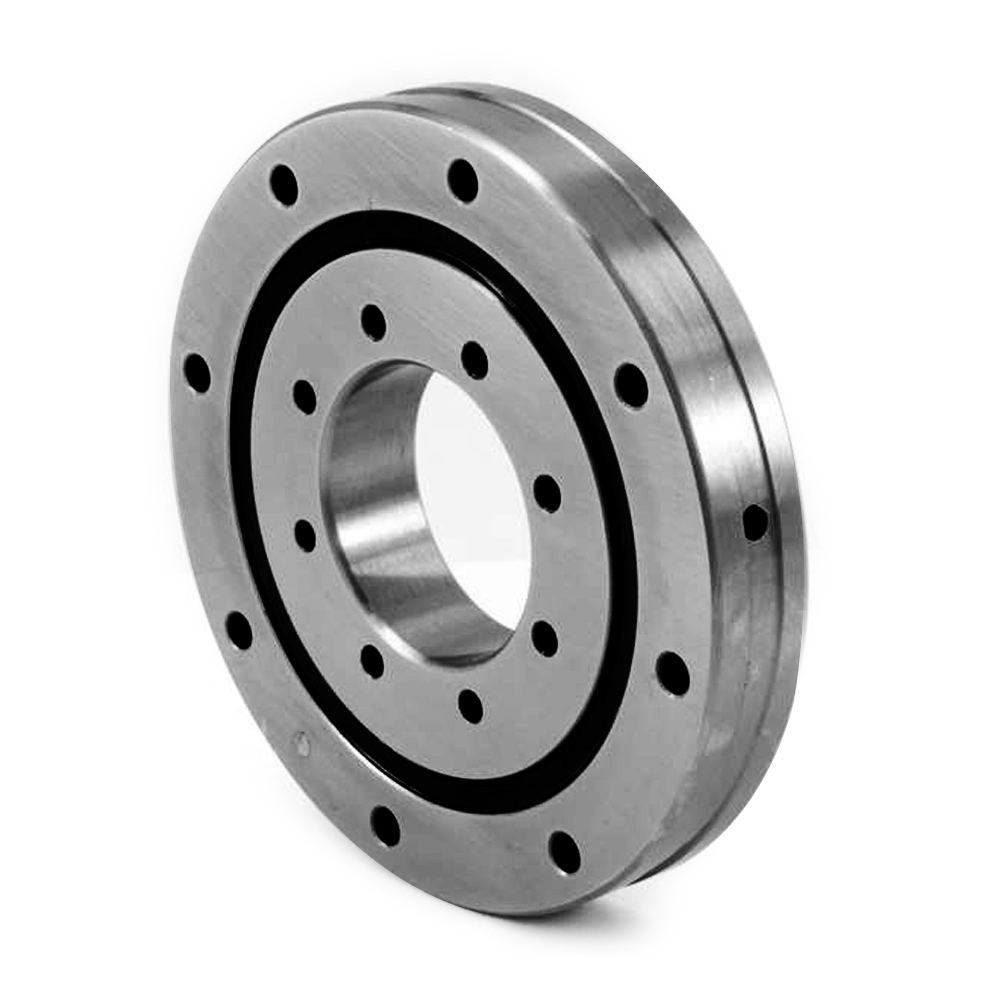Troubleshooting Common Issues with Turntable Bearings
Turntable bearings are like the key parts in machinery and heavy-duty equipment. This blog aims to guide you in learning how to find and fix any issues with slewing ring turntable bearings. Effective troubleshooting isn't just about mending what's broken right now; it's also about stopping issues before they happen and keeping your gear running smoothly all the time.

Common Turntable Bearing Issues and Their Causes
Slewing bearings are key to keep your machines running smoothly. But sometimes, they can run into problems that affect their performance and lifespan. Here's a detailed breakdown of the common issues, possible causes, as well as troubleshooting solutions.
Lack of Flexibility in Rotation
Possible Causes:
- After being in storage for a while, new bearings may experience stiff rotation because the lubricant gets thicker and stickier under cold conditions.
- Post-installation stiffness may result from improper mounting, poor gear meshing or foreign objects in the gears.
- Stiffness during operation can arise from a lack of lubrication, damaged seals, or gears that have become dirty.
Troubleshooting and Solutions:
- For new bearings, apply additional force during rotation or allow warm-up time. Check if there is transportation damage in the bearings.
- Adjust gear clearance and inspect for foreign objects. Ensure proper alignment of the bearing and mounting surfaces.
- To enhance flexibility, refill the lubricants, and replace any worn seals as needed.
Bearing Wear and Tear
Possible Causes:
Bearing wear can speed up because of a lack of lubrication, excessive load, or dirt and debris.
Troubleshooting and Solutions:
- Regularly check and maintain proper lubrication. Use high-quality lubricants suitable for the specific conditions in which your equipment runs.
- Use load monitoring systems to prevent excess load, and clean the bearings regularly to get rid of dirt and debris.
Speed Variations
Possible Causes:
- Belt Issues: Changes in belt tightness can lead to speed variations. Dirty belts or pulleys can also disrupt the smooth rotation.
- Lubrication: Inadequate lubrication can cause the turntable to run unevenly.
- Bearings: Dirty bearings can hinder the consistent spinning of the turntable.
- Temperature Fluctuations: Changes in temperature can alter the viscosity of the bearing oil, affecting the bearing's speed.
Troubleshooting and Solutions:
- Adjust the belt tension slowly and carefully. Follow the recommended guidelines.
- Ensure thorough cleaning of belts and pulleys, and apply lubricant to the bearings. Allow time for the oil to settle after re-oiling.
- Monitor room temperature to ensure it remains within the ranges for best bearing performance.
Noise and Vibration Issues
Possible Causes:
- Over-tightened Mounting Screws: If screws are too tight, they might squeeze the rubber grommets, leading to noise and shaking.
- Misaligned Gears: Improper alignment of gears can lead to noise and vibration as they interact.
- Insufficient Lubrication: Lack of lubrication can cause components to rub against each other, creating noise and vibration.
- Foreign Objects in the Raceway: Debris in the raceway can cause irregular movement and noise.
- Loose Installation Bolts: Vibration can be caused by bolts that are not tightened correctly.
Troubleshooting and Solutions:
- Adjust Screw Tightness: Loosen screws that are too tight to prevent compressing rubber grommets
- Check Gear Alignment: Ensure that gears are properly aligned.
- Maintain Lubrication: Regularly refill the lubricant to keep components moving smoothly and quietly.
- Inspect for Foreign Objects: Check the raceway for any debris or foreign objects that might be causing noise or vibration, and remove them
- Secure Installation Bolts: Make sure to tighten the installation bolts the manufacturer's specifications.

Excessive Bearing Swinging
Possible Causes:
- Bolts that are not tight enough: If the bolts that hold the bearing or its parts aren't tightened enough, they might cause excessive movement.
- Inadequate Structural Rigidity: A steel structure that lacks the necessary rigidity can lead to increased bearing swing.
- Overloading: Using the equipment beyond its specified capacity can make the bearings move around too much.
Troubleshooting and Solutions:
Regularly check and tighten all the bolts. Make sure the support structure is robust. Stick to the operating procedures to avoid overloading the equipment for extended periods.
- Adjust Screw Tightness: Loosen screws that are too tight to prevent compressing rubber grommets, which can lead to noise and vibration.
- Check Gear Alignment: Ensure that gears are properly aligned to reduce noise and vibration.
- Maintain Lubrication: Regularly refill the lubricant to keep components moving smoothly and quietly.
- Inspect for Foreign Objects: Check the raceway for any debris or foreign objects that could cause noise or vibration and remove them.
- Secure Installation Bolts: Tighten installation bolts according to the manufacturer's specifications to prevent vibration caused by loose fittings.
Platter Wobble
Possible Causes:
- Insufficient lubrication in the bearing.
- Misalignment of the platter after it has been replaced or removed.
- Damage due to prolonged exposure to sunlight or dropping the turntable.
Troubleshooting and Solutions:
- Verify and maintain the right amount of oil in the bearing—enough to let a little spill out. This makes sure everything is well-lubricated.
- When you put the platter back on, clean all the touching parts carefully to prevent any dirt or dust from causing misalignment.
- Carefully inspect the platter for any signs of damage that may have occurred during removal or replacement. If you find any damage, consider replacing the platter. This will help ensure that everything aligns correctly and functions properly.
- Make it a habit to frequently inspect your slewing ring bearings for wear and tear or damage that could be the result of sun exposure or physical impacts. If you spot any issues, take steps to shield your bearings from such exposure.
Advanced Troubleshooting Techniques
To keep turntable bearings running smoothly and for a long time, it's important to find problems early. Here are some ways to check for issues:
Analyzing Vibration and Thermal Performance
- Vibration Analysis: Employ vibration analysis tools to spot any misalignment or heavy wear in your machinery. These tools can help you zero in on parts that might need tweaking or fixing.
- Thermal Imaging: Make it a habit to use thermal imaging to monitor your bearings' temperatures. This is a key step in catching any overheating early on, which might be a sign that the equipment needs more lubrication or carries too much load.
Torque and Alignment Checks
- Torque Verification: Always double-check that the bolts are tightened to the manufacturer's specified torque. This ensures that they are neither too loose nor too tight, which can affect the equipment's performance and longevity.
- Precision Alignment: Use precision instruments to ensure that the bearings are correctly aligned with their mounting surfaces. Getting the bearings aligned properly is essential for less wear, better performance and prevention of early failure.
Gear Meshing Inspection
- Regular Inspection: Make a habit of regularly checking how the large and small gears fit together.
- Clean Debris: Keep the gears clean by removing any dirt or debris that might be caught between them.
- Check Alignment: Make sure the gears are properly aligned. This is important for reducing noise and wear on the gears.
Tools for Effective Turntable Bearing Troubleshooting
- Torque Wrenches: Use a torque wrench when you're tightening bolts to an appropriate level.
- Dial Indicators: Measure misalignment, wear, and gear meshing precision.
- Vibration Analyzers: Check for misalignment, check for wear and tear, and make sure the gears fit together nicely.
- Bearing Pullers: During maintenance, carefully take out any worn bearings.
- Thermal Cameras: Find spots of overheating or excessive friction in bearings.
Preventive Maintenance Tips
- Routine Inspections: Regularly check your turntable bearings visually for any signs of wear, misalignment, or dirt accumulation.
- Lubrication: Follow manufacturer recommendations for lubrication frequency and type. Check and add lubricants from time to time to prevent damage to the bearings caused by friction or heat
- Load Monitoring: Use load-monitoring tools to keep an eye on the load of the turntable bearings are carrying. This makes sure the bearings run within safe limits and prevents overloading.
- Seal and Belt Maintenance: Frequently inspect seals and belts, and replace them as necessary. This prevents dirt ingress and maintains consistent machine operation.
Deciding When to Replace Turntable Bearings
Signs of Replacement
Here are the signs that indicate it's time to replace the bearings:
- Severe Wear or Damage: If the bearings show significant wear or damage that can't be fixed with regular maintenance.
- Persistent Noise or Vibration: If the noise and shaking keep happening even after you've tried troubleshooting and making adjustments.
- Consistent Performance Issues: If there are ongoing speed variations and noticeable performance drops.
Selecting Replacement Bearings
Here are the tips for you to follow when picking a new bearing:
- Consider the load the bearing needs to support.
- Think about the material it's made from.
- Make sure it's suitable for the environment it will be in.
- Don't hesitate to ask experts for advice to ensure the new bearing is a good fit for your needs.
Conclusion
Troubleshooting common issues with turntable bearings is critical to make sure they work well and last a long time. It’s highly advisable to proactively maintain and regularly check them to prevent costly breakdown. At LILY Bearing, we promise to help you keep your machines running smoothly and efficiently.
Keep Learning









